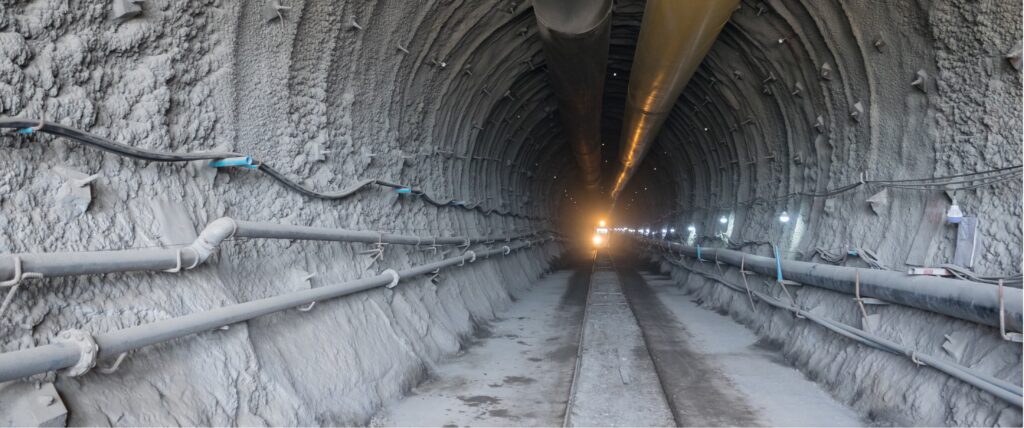
How Capital Projects Unlock Significant Net Present Value
Effective risk management, strategic planning, and operational excellence are crucial for minimizing NPV losses and maximizing project value.
Recent studies and industry reports suggest that a significant portion of mining projects may face challenges that impact net present value (NPV) negatively. Estimates range from 20% to 60% or more, highlighting the inherent risks and complexities involved in the mining industry. These challenges may include cost overruns, schedule delays, geological uncertainties, regulatory changes, and market fluctuations, among others.
In fact, in other reports, McKinsey says as many as 4 out of 5 mining projects come in late and over budget by an average of 43%. EY found that 64% ran over budget or schedule with the average cost overrun sitting at 39%, after studying 192 global mining and metals projects worth more than $1 billion.
How can mining projects improve project execution when it comes to budgets and timelines? Mining companies must grapple with many pain points – cost overruns, schedule delays, operational risks, supply chain disruptions, and geopolitical uncertainty.
One of the most critical areas involves owner-contractor relationships and creating a “culture by design” right from the beginning. Many owners outsource their projects to EPCMs that have historically operated in mining and are typically very engineering focused on getting the design as accurate as possible to maximize outcomes and benefits. While important, it only represents 35% or 40% of the total cost of a typical project and that’s not where we tend to see issues. The other 60%-65% of the scope is construction.
Organizational culture can significantly impact projects in several ways:
- Risk Management: prioritizing safety, compliance, and responsible resource management can lead to better risk identification and mitigation strategies, reducing the likelihood of costly incidents and delays.
- Employee Engagement: creating a positive and supportive culture to foster employee engagement, morale, and retention, leading to higher productivity, better teamwork, and lower turnover rates, which are critical for project success.
- Decision-Making Processes: promoting transparency, collaboration, and innovation can lead to more efficient decision-making processes, enabling quicker responses to project challenges and opportunities – maintaining “single source of the truth”.
- Adaptability: encouraging flexibility, learning, and continuous improvement enables organizations to navigate changing market conditions, regulatory requirements, and technological advancements more effectively.
- Stakeholder Relations: valuing relationships with stakeholders, including local communities, governments, and investors, can enhance trust, collaboration, and support for mining projects, reducing the risk of opposition or regulatory challenges.
In summary, positive mining capital project performance, characterized by effective organizational culture, cost management, revenue generation, risk mitigation, and optimal capital expenditure allocation, can enhance NPV by increasing cash flows and reducing project risk.
USC partners with your organization and coaches your people to significantly impact performance outcomes and get your capital projects over the line on-time and within budget.
USC works with Owner Teams to execute capital projects and prepare for operational readiness during the early stages of the capital project development process, typically prior to the start of the construction phase. Operational readiness activities should be integrated into project planning and execution to ensure early adoption of the desired project culture while building buy-in from the various project stakeholders. There are three key elements to successful projects and capturing NPV.
Culture: Corporate culture is the shared values, attitudes, and practices that define the owner’s project, operation and interactions with its employees and various stakeholders. Culture clashes often occur when people from different backgrounds are assembled.
In capital projects, this often occurs when stakeholders are not aligned around a common set of goals and priorities, potentially resulting in the creation of an unsafe environment and/or low productivity and poor-quality execution. The imperative in this situation is to align stakeholders and define a “culture by design” at the top and instill the culture from the bottom up – deliberately starting at the work activity level.
USC works with successful owner teams to begin this journey from the outset of the project, and usually with a high sense of urgency.
Governance: While most recognize the need for establishing a robust governance framework, with a measurable set of metrics, many fail to execute. Typically, governance frameworks include everything from policies, regulations, functions, processes, procedures, and responsibilities, as well as how project progress and execution performance are tracked and reported.
It is not uncommon for EPCs and sub-contractors to use their own processes and systems to track performance – leading to various versions of the truth on the project. Inconsistent and inaccurate information results in inaccurate project execution planning, ineffective execution, and inaccurate status reporting which in turn results in schedule slippage and costly overruns.
USC works with project stakeholders to ensure governance goes beyond the decision-making of a single project, by developing a “Truth Center” where priorities are set, planning is done, performance is integrated, measured and communicated. By creating a single source of the truth and defining detailed work activities, including who is responsible for what and when, stakeholders can avoid the typical project execution pitfalls. By providing consistency, certainty and coordination, owner teams add to the stability of the project.
Readiness: How many projects are delayed due to poorly defined feasibility studies, engineering delays, late recruitment of key personnel and/or procurement delays? These early delays are difficult to overcome during the project and have a severe impact on NPV.
Many organizations are unclear when to start working on operational readiness – long ramp up times and slow operational start-ups are NPV killers, even for well executed capital projects. Key operations personnel should join the project early in the engineering phase to ensure the operability and maintainability of engineering designs. Additionally, they should play a role in defining and designing the culture for the project. Initiating the design of the operational processes and defining operational system requirements no later than the beginning of the construction phase and completed before starting the commissioning phase.
USC brings 55+ years of experience in shaping organizations and designing and implementing management operating systems and processes to assist owner teams in mitigating start-up risks and unlocking hidden-value to accelerate ramp-up success.
USC Helps You Tackle Key Challenges
- Aligning key stakeholders to a common goal and set of project priorities while defining a common culture
- Ingrain a safety-first approach into a planning and execution excellence culture
- Improving your NPV by developing management process and systems that enable in-shift execution optimization
- Ensuring project execution readiness prior to project startup and operational readiness prior to operational ramp-up
Do you want to understand how prepared your company is to manage project risks while accelerating work execution and operational ramp-up and what the key focus areas that will contribute to improved net present value?
Want to find out more about how USC can help you uncover the hidden-value lurking in your capital project?
For more information, let’s talk it through with a no obligation meeting with one of our executive team members. Email info@usccg.com to arrange a call.





